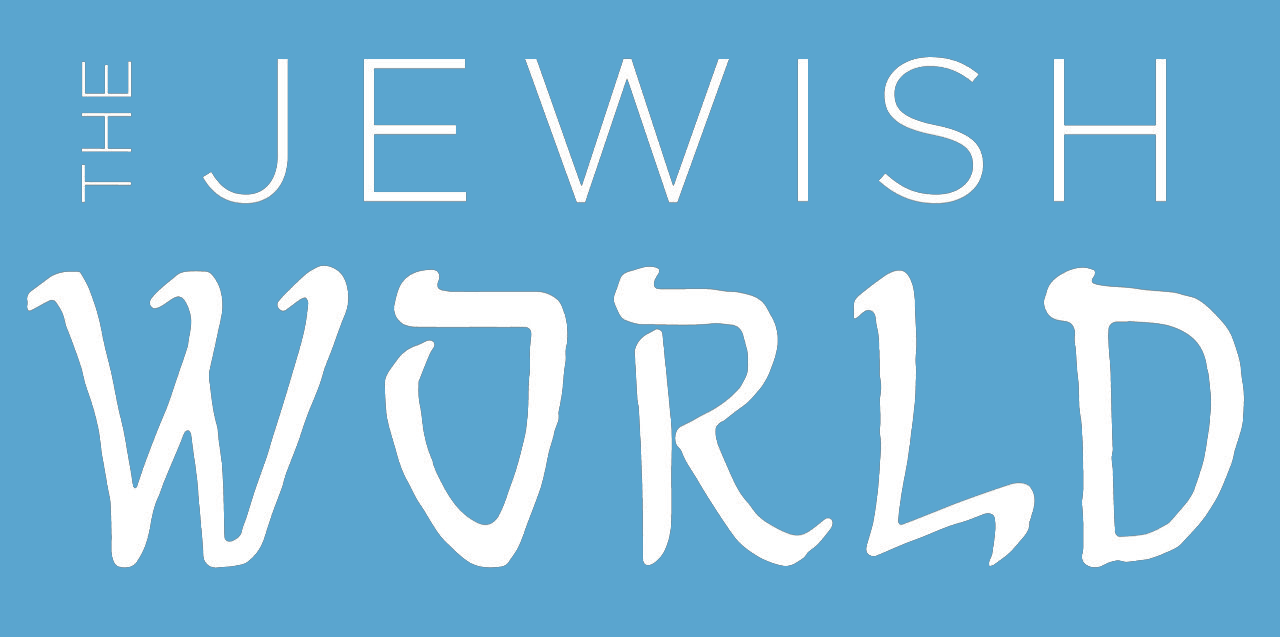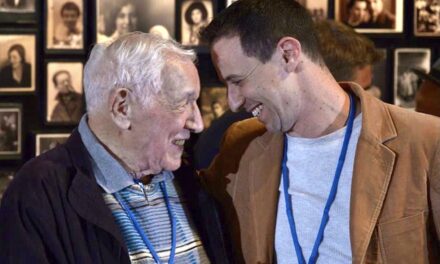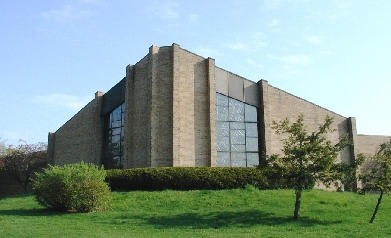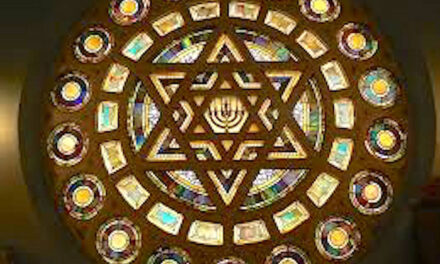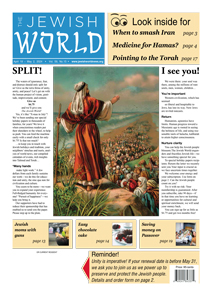When the Nazis came to the Catskills
A new PBS documentary about the German American Bund reveals footage of summer camp in Windham

Stills from “Volks-Deutsche Jungen in U.S.A.” (“German Youth in the U.S.A.”). The 25-minute film is the only existing documentation of Camp Highland, a Nazi summer camp for children in Windham operated by the German American Bund.
Jan 21, 2024
When it’s time for the flag roll call, the boys’ playful demeanor turns militaristic. The stars and stripes are raised, but waving in the wind next to it are two other flags: one with a swastika and another with a lightning bolt, the emblem of the Hitler Youth.
These scenes are immortalized in the film “Volks-Deutsche Jungen in U.S.A.” (“German Youth in the U.S.A.”), now held in the National Archives. They depict Camp Highland, a Nazi summer camp for children in Windham operated by the German American Bund, a pro-Nazi organization that was active in the 1930s and sought to build an Aryan movement in the U.S.
Now, these images and the disturbing history behind them are part of a new documentary, “Nazi Town, USA,” which tells the story of the Bund and how it operated. Directed by filmmaker Peter Yost, the documentary premieres on Jan. 23 on PBS.
Stills from “Volks-Deutsche Jungen in U.S.A.” (“German Youth in the U.S.A.”). The 25-minute film is the only existing documentation of Camp Highland, a Nazi summer camp for children in Windham operated by the German American Bund.
National Archives
Stills from “Volks-Deutsche Jungen in U.S.A.” (“German Youth in the U.S.A.”). The 25-minute film is the only existing documentation of Camp Highland, a Nazi summer camp for children in Windham operated by the German American Bund.
National Archives
“The closest thing we had to a Nazi Party”
Founded in Buffalo in 1936, the German American Bund grew to include at least 70 local chapters nationwide, with headquarters in Manhattan. At its peak, it attracted more than 100,000 members — most of them American citizens of German descent. The organization associated itself with the Ku Klux Klan and ran dozens of summer camps to indoctrinate would-be future leaders of an American fascist movement under the guise of instilling a love of nature, vital skills and family values.
Besides Windham, boys and girls of German American families spent summers at Bund camps in Chicago, Los Angeles, Pennsylvania, San Francisco, Milwaukee and other locations.
Although other pro-Nazi organizations emerged across the country, the Bund was the biggest and most official, according to Bradley Hart, a historian and author who appears in the PBS documentary.
“They were the closest thing that we had to an official Nazi Party,” he said.
The Bund’s most notorious moment came in February 1939, when more than 20,000 people filled Madison Square Garden for a “pro-Americanism” rally in which images of George Washington were displayed alongside Nazi banners, while antisemitic and anti-communist speeches invigorated the crowd.
U.S. flags, swastikas and a portrait of George Washington at a meeting of the German American Bund at Madison Square Garden on Feb. 20, 1939.
FPG/Archive Photos/Getty Images
Yost, director of the PBS documentary, came across the Bund’s story when a filmmaker friend, Marshall Curry, was working on the Academy Award-nominated short film “A Night at the Garden” about the Madison Square Garden rally.
“It begs the question, if they had 20,000 of these German American Bund members inside Madison Square Garden in 1939, what the heck was going on in the broader American society that enabled that?” Yost said in an interview with the Times Union.
Yost and his team of researchers tried to answer that question. In the wake of the Great Depression, “a significant number of people wondered if, in fact, the American experiment was failing, if democracy might be done for, and if they should turn to some other system of government,” he said.
That in turn sowed fear and discord in 1930s America, raising questions about the boundaries of free speech and causing some to scapegoat minorities.
“These are questions that came up around the Bund — should they be restricted in certain ways or not?” Yost said. “These are issues we’re still dealing with, albeit in a different context today.”
Mystery surrounding Windham camp
The story of the Catskills summer camp remained largely unknown, even locally. Windham’s town historian Patricia Morrow wasn’t aware of its existence until the National Archives film was brought to her attention in 2014, she told the Watershed Post at the time.
It’s difficult to pinpoint the exact location of Camp Highland due to a changing landscape, making it impossible to find who owned the land at the time, Morrow said. Her best guess is that it was located on Mount Pisgah.
But antisemitism wasn’t new in the Catskills. In the late 1800s and into the early 1900s, some of Greene County’s resort and boarding house proprietors “made no attempt to hide their antisemitic sentiments,” Morrow said. Their ads often stated “No Hebrews Taken” or “Gentiles Only,” eventually changing to “Churches Nearby” to convey “the same message in a somewhat less offensive manner.”
“It may have been that perception of kindred spirits that led the German American Bund, or whoever was behind the decision, to build Camp Highland in Windham,” Morrow said.
In the late 1800s and into the early 1900s, some of Greene County’s resort and boarding house proprietors “made no attempt to hide their antisemitic sentiments,” Windham’s town historian Patricia Morrow said. Their ads often stated “No Hebrews Taken” or “Gentiles Only,” eventually changing to “Churches Nearby” to convey “the same message in a somewhat less offensive manner.”
Vedder Research Library
In the late 1800s and into the early 1900s, some of Greene County’s resort and boarding house proprietors “made no attempt to hide their antisemitic sentiments,” Windham’s town historian Patricia Morrow said. Their ads often stated “No Hebrews Taken” or “Gentiles Only,” eventually changing to “Churches Nearby” to convey “the same message in a somewhat less offensive manner.”
Vedder Research Library
It’s unclear how long the camp lasted or what brought about its demise. With no permanent structures — as opposed to camps such as one on Long Island, where Bund members built homes — the Catskills’ camp was probably an elite outdoors retreat for a couple of months in the summer of 1937, Hart said.
While a Times Union reporter found evidence of such ads with antisemitic language in the archives of Coxsackie’s Vedder Research Library, references to the Bund’s Catskills camp could not be found in copies of the Windham Journal from 1936 and 1937.
ADVERTISEMENTArticle continues below this ad
“Fertile ground” for Nazi ideas
The Bund had been on the FBI’s radar since its inception, but its activities became more difficult to ignore after several inside accounts of the organization in 1937-38 were published, Hart said.
Support for the organization declined after the start of World War II and that year, its leader, Fritz Kuhn, was convicted of embezzling Bund funds. With his U.S. citizenship revoked, Kuhn was deported to Germany in 1945.
The rise and fall of the Bund is a “dramatic” story, Yost said, but for him, it was also a way to explore a surprising realization: Given the divisions of the 1930s and the severe effects of the Great Depression, the American society was “fertile ground” for Nazi ideas. He cited the Nuremberg laws, which took inspiration from America’s Jim Crow laws and strict immigration racial quotas.
“It’s a little too comfortable to believe the narrative that we fought ‘the good war,’ pushed back against this noxious problem that was ‘over there,’ and our hands are clean,” Yost said. “It’s a more complicated history because the seeds for a number of these ideas were actually sprouted in America.”
With limited knowledge of Camp Highland, the film depicting the children playing beneath Nazi flags is one of the few items proving Nazism was once in our backyard.
“We have to keep our country’s dark history in mind. This is history that needs to be remembered so that it doesn’t happen again,” Hart said.
Yost said “Nazi Town, USA” reveals the fragility and resilience of democracy in America.
“I find it personally troubling and inspiring to look in depth at this moment,” he said. “We’ve been there before and to see it can be disconcerting, how deep-rooted some of these ideas are, but also inspiring to see that people came through and fought for democracy.”
<div class
Jan 21, 2024
Maria M. Silva is a Hudson Valley news reporter for the Times Union. Her reporting career began at the Utica Observer-Dispatch, where she worked as the food, drink and culture reporter. Born and raised in Spain, Maria first attended the Autonomous University of Barcelona before she transferred to Utica University in 2017. She joined the Times Union in 2023. Reach Maria at [email protected].
